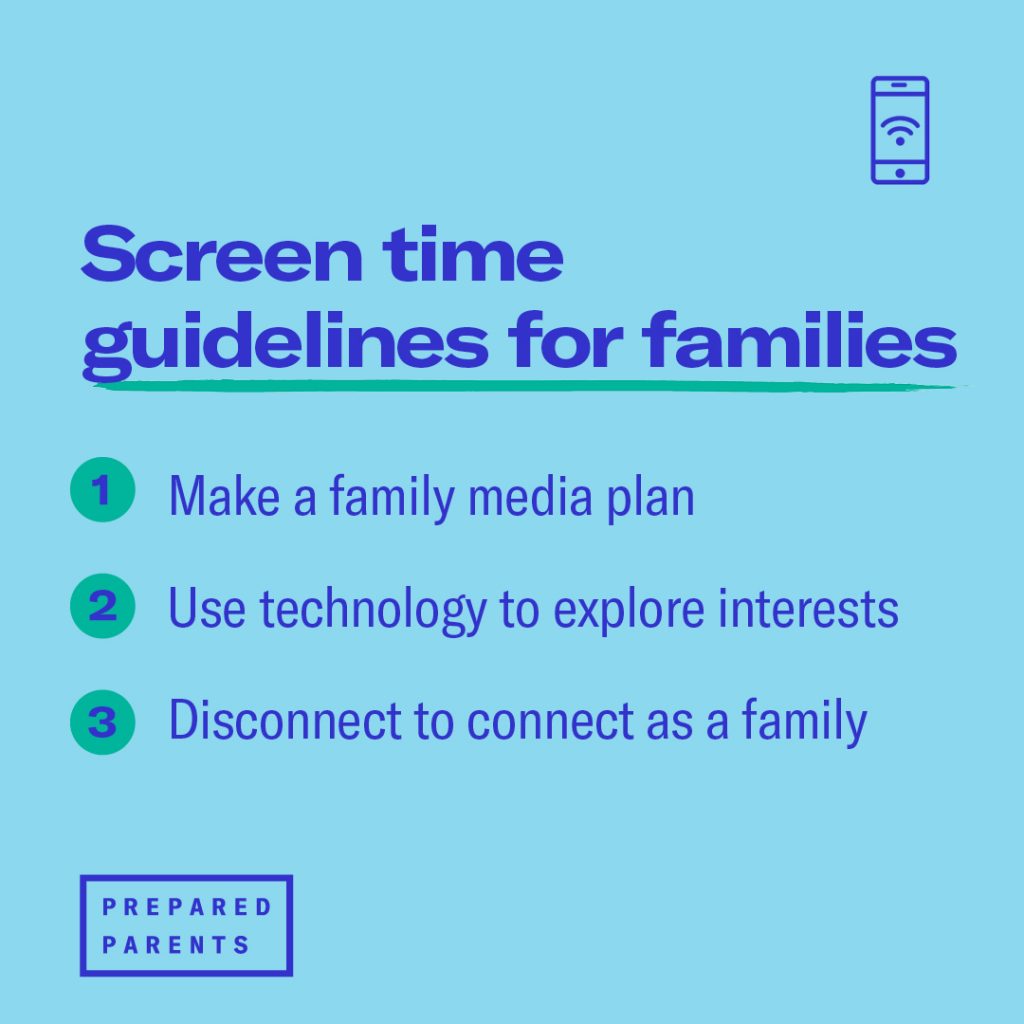For years, digital environments have been growing in importance in the lives of children and adults alike. However, at the start of the COVID-19 pandemic, screens became our lifelines. For many of us, they were the only way we were staying connected to work, school, and family and friends.

When screens are unavoidable—as they were during the pandemic—we recognize that kids will be using them more than we may want. Acknowledging this, the American Academy of Pediatrics (AAP) revised their recommendations for screen time from limiting the number of minutes kids are on devices to creating a plan that includes input from all family members.
The AAP’s plan creator is a useful tool to design a strategy that will work in your household. As you design and execute your plan, keep these thoughts in mind to make the most of your screen time:
- Be specific about screen-free places and times. Choose zones in your home where mobile devices and TVs are not allowed, like the bedroom or the dining table. Also, identify screen-free times throughout the day. Mealtimes and the hour before bed are two examples. If you have an overnight device curfew, specify exactly what time it starts and where devices will be stored overnight.
- Choose your entertainment carefully. Find something uplifting that will encourage you. Use tools like Common Sense Media to find helpful media recommendations based on kids’ ages.
- Talk about it. When you sit down to watch movies, videos, and tv shows together take a moment to discuss them afterward. This is an opportunity to bond and may lead to discovering a newfound interest you and your kid want to learn more about.
- Plan non-screen time too. When the time comes to disconnect, plan how you’ll connect to each other. Play board games? Read a book together? Make a meal? When you ask your kid to design a plan for the family, you’re encouraging them to practice goal-setting.
- Encourage kids to use screens to create content. The possibilities are endless.
• Kids could host a digital show-and-tell for sharing real-world learning moments.
• Show off your kid’s culinary skills with a digital cooking or baking competition.
• Sponsor a Zoom talent show and entertain friends and relatives around the world.
• Let kids make music with tools like Apple’s Garage Band or Tunepad, a free online tool for learning music and programming. - Consider solo viewing vs. group screen time. Divide screen time between co-play/co-watching and more singular or focused viewing. What shows, apps and screens fall under each? This will help build everyone’s negotiation skills.
Finally, don’t forget to talk to your kids about digital citizenship!
Teach your kids about cyberbullying and make sure they know they can come to you if they see, read, or hear something that doesn’t seem right.

